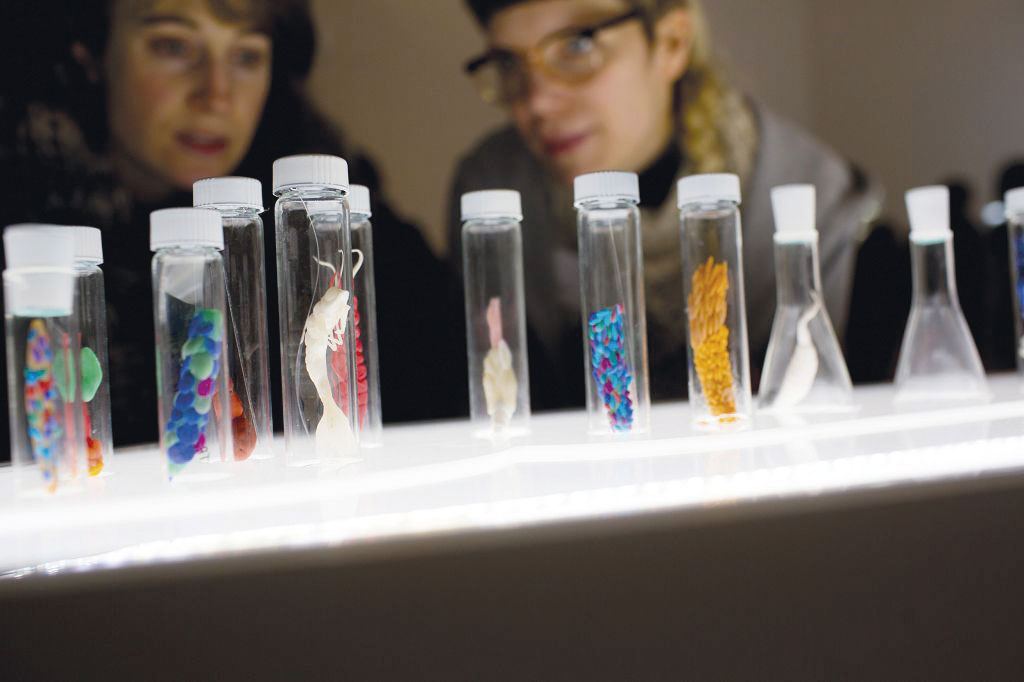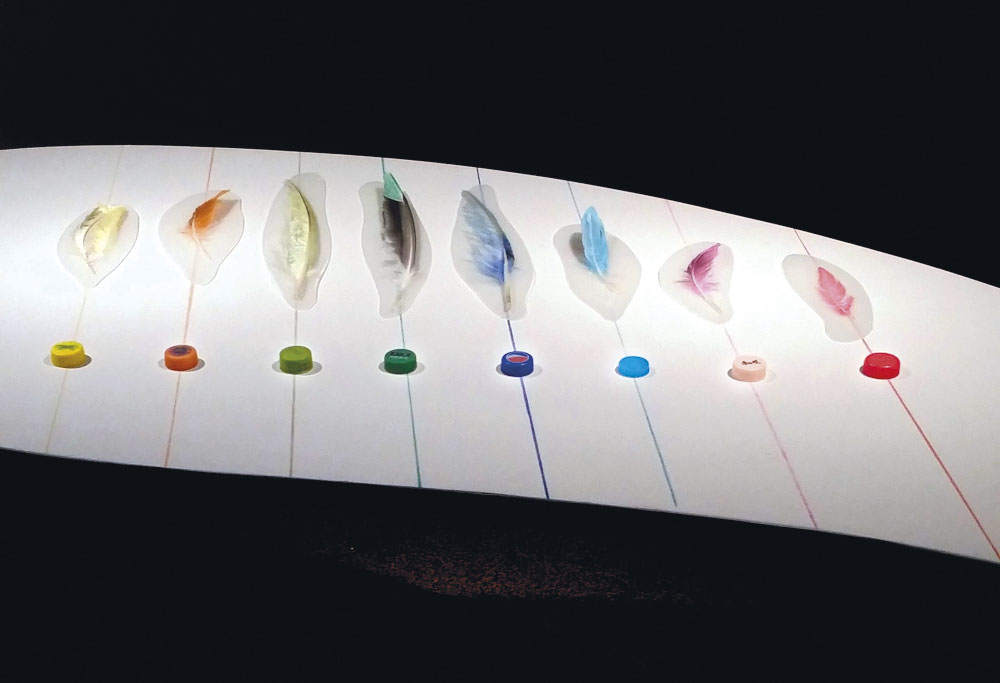PINAR YOLDAS
An Ecosystem of Excess, 2014 (Un ecosistema del exceso)
Glass water Tanks, distilled water, plastic, polymer wax, feather, wood and mixed media.
Extension variable
This project starts in the Great Pacific Garbage Patch. Covering between 700.000 and 15 million square kilometers, the site is a monument to plastic waste on a global scale. Referring to Kantian aesthetics, it is a truly sublime kinetic sculpture built by all the nations around the Pacific Ocean through many years of mindless, unsustainable consumption. As environmental activist and discoverer of the Trash Vortex Captain Charles Moore boldly claims, “the ocean has turned into a plastic soup”. From primordial soup to plastic soup, An Ecosystem of Excess asks a very simple question: If life started today in our plastic debris filled oceans, what kinds of life forms would emerge out of this contemporary primordial ooze?
The project introduces pelagic insects, marine reptilia, fish and birds endowed with organs to sense and metabolize plastics as a new Linnean order of post-human life forms. Inspired by the groundbreaking findings of new bacteria that burrow into pelagic plastics, An Ecosystem of Excess envisions life forms of greater complexity, life forms that can thrive in man-made extreme environments, life forms that can turn the toxic surplus of our capitalistic desire into eggs, vibrations, and joy. Starting from excessive anthropocentrism An Ecosystem of Excess reaches anthropo-de-centrism, by offering life without mankind.
Pinar Yoldas creates in this work a possible ecosystem inhabited by new animal species based on variations of the vital organs and biological transformations to adapt to the new plastic medium. For this she develops a lexicon that describes the functions of the new organs and the changes in existing creatures.
P-Plastoceptor: Sensory organ to detect plastics
Polypropylene is the second most common plastic after polyethylene. P-Plastoceptor is a sense organ which can detect polypropylene polymers in the ocean. The organ takes its name from its sensing capabilities for polypropylene and its shape that almost resembles the letter P.
PetroNephros: Kidney to filter plastics
Most common plastics have additives and plasticizers in them, chemicals to give color, texture , flexibility and so on. These additives leach out over time and enter biological systems. They can be highly detrimental by causing cancer, infertility and nerve damage. Bisphenol A and Phtalates are the most well known, and petronaphros does an amazing job filtering out these additives during the digestion of plastics.
Plastisphere insects
Pelagic insects require hard substrates upon which to lay eggs, and their reproduction is limited by the availability of floating materials. Microplastics – i.e., the main ingredients of the plastic ocean – are the perfect sites for the oviposition of aquatic insects. According to a 2012 scientific study, there is a positive correlation between increased levels of microplastics in the neuston layer and the reproductive success of pelagic insects. As a consequence, the plastisphere opens a new chapter in the wondrous world of aquatic insects. With their state-of-the-art microplastics nests, their most delicate & nutritious eggs, and their wildly colored bodies, plastisphere insects are key players inthe Ecosystem of Excess.
Pantone Birds: from factory to feather
Plastics and their colors are integrated into the evolutionary process of birds, producing chromatic changes in their plumage to adapt to the environment.



